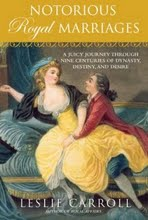This fall brings an abundance of new and updated travel guides for nearly anywhere you would like to venture. If you are planning your first trip abroad, thinking about a road trip to a few national parks or you are a seasoned traveler ready for a new adventure, there is something for everyone. Even if you are not planning a trip in the near future, consider one of these guidebooks for armchair traveling!
![]()
DK National Parks of the USA – A comprehensive account of our 63 parks, DK National Parks of the USA covers the best sites and itineraries for each park. With some of the most gorgeous photography in any travel guide, this guide outlines the best choices whether you are visiting a park for one hour or one week. This guide also has detailed and easy to read maps for a hassle-free experience. Also, included are the best places to eat, sleep and dine in close proximity to each park.

Rick Steves Best of Europe – One of the best travel guides for new or seasoned travelers to Europe, this nearly 1,000 page book covers the top European destinations for any experience or budget. Steves includes detailed information on taking trains, trams and buses with ease and ideas for walking tours to capture the top sights. Destinations include England, France, Spain and Italy.

Rick Steves France – Similar to the previous title and other Rick Steves travel guides, his series highlight the life changing aspects of travel, including meeting locals and visiting top sites along with itineraries that includes stops less well known. This guide to France is the 21st edition with near yearly updates on hotels and other accommodations for all budgets. Also included are walking tours and ample coverage of museums, local restaurants and cultural and historic information. Not only is Paris included, Steves devotes ample pages to Normandy, Burgundy, Provence, the French Riviera and the Brittany region.
![]()
DK Top 10 New England – DK Top 10 guides are perfect for a short break and DK Top 10 New England is no exception. Covering the top local cuisine, outdoor activities, quaint towns and historic gems, the authors of this guide have streamlined the best of the best in Maine, Vermont, New Hampshire, Massachusetts, Rhode Island and Connecticut. Sample itineraries are included for a weekend or a few days accompanied by a laminated pull out map.

Fodor’s Essential Japan – Written by Fodor’s local experts who have an intimate knowledge of Japan, Fodor’s Essential Japan, is an updated volume that has been redesigned in an easier to read format, newly updated photos and multiple itineraries for each destination. Included are Tokyo, Osaka, Sapporo, Mt. Fuji and more. Along with the historical and cultural background of Japan, this guide has practical transportation information and language tips with essential phrases.
Lonely Planet Offbeat North America – For travelers looking for more remote or off the beaten track travels, try Lonely Planet Offbeat North America. With over 100 lesser known destinations in The U nited States, Canada and Mexico, this guide also includes 25 extra hidden gems along with expertly curated advice on how to beat the crowds and the best times to travel to these locales. Unique to this title are alternatives to popular sites that are equally as memorable but not so touristy.
nited States, Canada and Mexico, this guide also includes 25 extra hidden gems along with expertly curated advice on how to beat the crowds and the best times to travel to these locales. Unique to this title are alternatives to popular sites that are equally as memorable but not so touristy.
In addition to the titles listed above check out these other brand new travel guides!
DK Top 10 Brussels (includes Bruges, Ghent and Antwerp)





